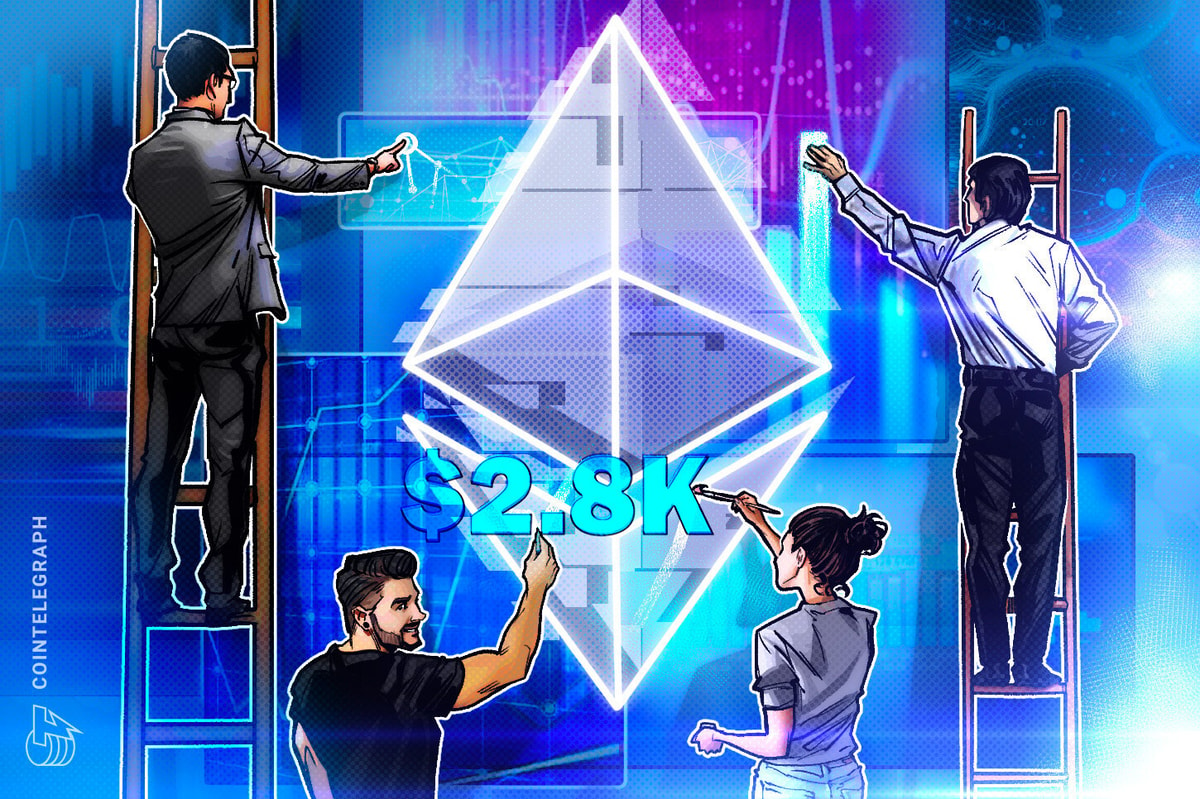Ether price rallied 7% after a new memecoin protocol was launched, but data shows traders are not buying the hype.
Market Analysis
Ether (ETH) surged to a two-week high of $2,850 on Feb. 17, marking a 7% intraday gain. The rally followed a sharp spike in Ethereum network transaction fees, which jumped from $0.70 to $70 for a single swap transaction. While this initially fueled optimism among investors, the gains quickly faded as fees returned to normal levels.
Ethereum average gas prices, gwei. Source: Milkroad
Traders soon realized that the surge in blockchain activity was driven by the launch of a relatively unknown project. As a result, ETH lost $100 within an hour. Weak sentiment in Ether futures markets further pressured the price, trimming its 24-hour gains to under 2%. Ultimately, the optimism proved short-lived.
Addresses linked to the “Wall Street Pepe” token accounted for over 25% of Ethereum’s transaction fees during a three-hour window, according to Etherscan data. The frenzy centered around the launch of “Pepu Pump Pad,” a memecoin launchpad built on an Ethereum layer-2 chain.
To assess whether professional Ether traders were affected by the sudden spike in transaction costs, one must examine ETH monthly futures contracts.
ETH futures 1-month annualized premium. Source: Laevitas.ch
The Ether futures basis rate, which reflects derivatives traders’ sentiment, remained relatively stable at 6% on Feb. 17. Typically, ETH monthly futures trade at a 5% to 10% premium compared to spot markets to account for the longer settlement period.
This trend is also visible in spot Ethereum exchange-traded funds (ETFs) in the United States, which saw modest net inflows of $2 million between Feb. 5 and Feb. 14. For context, these instruments traded 84% less volume on Feb. 17 compared to similar Bitcoin ETFs, according to CoinGlass data.
ETH futures leverage is stable with no signs of excessive demand
Retail traders appeared unaffected by the short-lived ETH price gains, as indicated by derivatives metrics. The perpetual futures (inverse swaps) funding rate, which is charged to either longs (buyers) or shorts (sellers), helps balance leverage imbalances on derivatives exchanges.
Ether perpetual futures 8-hour funding rate. Source: CoinGlass
When traders are optimistic about Ether’s price, the funding rate typically rises above 0.20% per 8-hour period, equivalent to 1.8% per month. Data shows that demand for leverage in perpetual contracts has been balanced, with no signs of excessive excitement observed on Feb. 17.
Despite a temporary increase in onchain activity, Ether’s price could see positive effects from upcoming upgrades aimed at reducing friction for wallets and decentralized applications (DApps) while improving network scalability. However, competition in the space continues to grow, with projects like Hyperliquid demonstrating the success of independent blockchain launches.
Ethereum supporter ripdoteth highlighted on X that Ethereum’s upcoming ‘Pectra’ upgrade is expected to double the blob capacity for rollups, enabling cheaper and faster layer-2 transactions. Additionally, proposed changes include the introduction of ‘gasless’ transactions, which can be sponsored by third parties.
Related: NYSE proposes rule change to allow ETH staking on Grayscale’s spot Ether ETFs
Source: ripdoteth
The upcoming Ethereum network upgrade is expected to include enhanced permissions for smart contracts, which will significantly improve the user experience for wallets. Additionally, as highlighted by user ripdoteth, multiple operations can be batched together, eliminating the need for individual approvals at each step of token swaps.
Increased usage of the Ethereum network is generally positive for Ether’s price. However, its success hinges on resolving an ongoing debate within the community about how to raise base layer fees and improve returns for native staking without significantly hindering ecosystem growth. Until a clear solution to this issue is reached, the likelihood of ETH breaking above the $3,000 resistance level remains low.
This article is for general information purposes and is not intended to be and should not be taken as legal or investment advice. The views, thoughts, and opinions expressed here are the author’s alone and do not necessarily reflect or represent the views and opinions of Cointelegraph.
This article first appeared at Cointelegraph.com News

